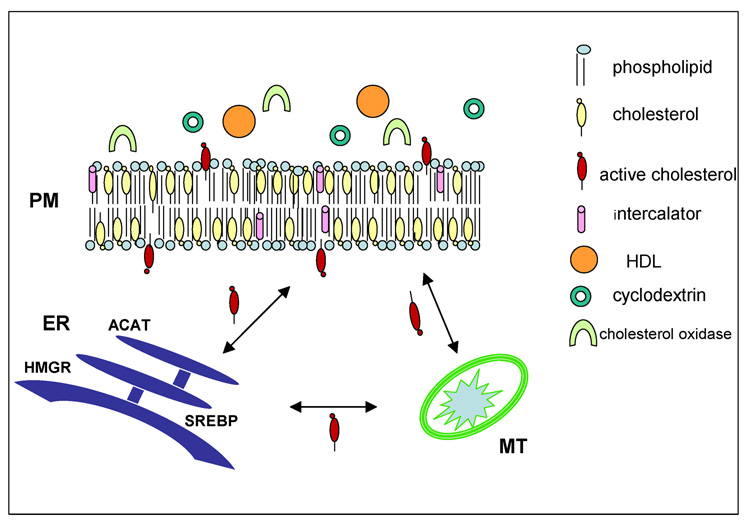Figure 7.
The active cholesterol hypothesis. Most of the plasma membrane cholesterol (submerged yellow molecules) is complexed with phospholipids and therefore has low escape tendency (activity). Excess cholesterol can bob more freely into the aqueous space and has relatively high activity (projecting red molecules). Similarly, intercalating amphipaths can displace cholesterol from its complexes, thereby activating it. Projecting sterol molecules can interact with extracellular reactants such as cholesterol oxidase, cyclodextrin, and high density lipoproteins. Active cholesterol also circulates through the cytoplasm to the endoplasmic reticulum and mitochondria, where it can serve as a metabolic reactant or a homeostatic signal effecting feedback down-regulation through its esterification, the inhibition of its biosynthesis and the expression of genes for cholesterol accretion. See text for details.

